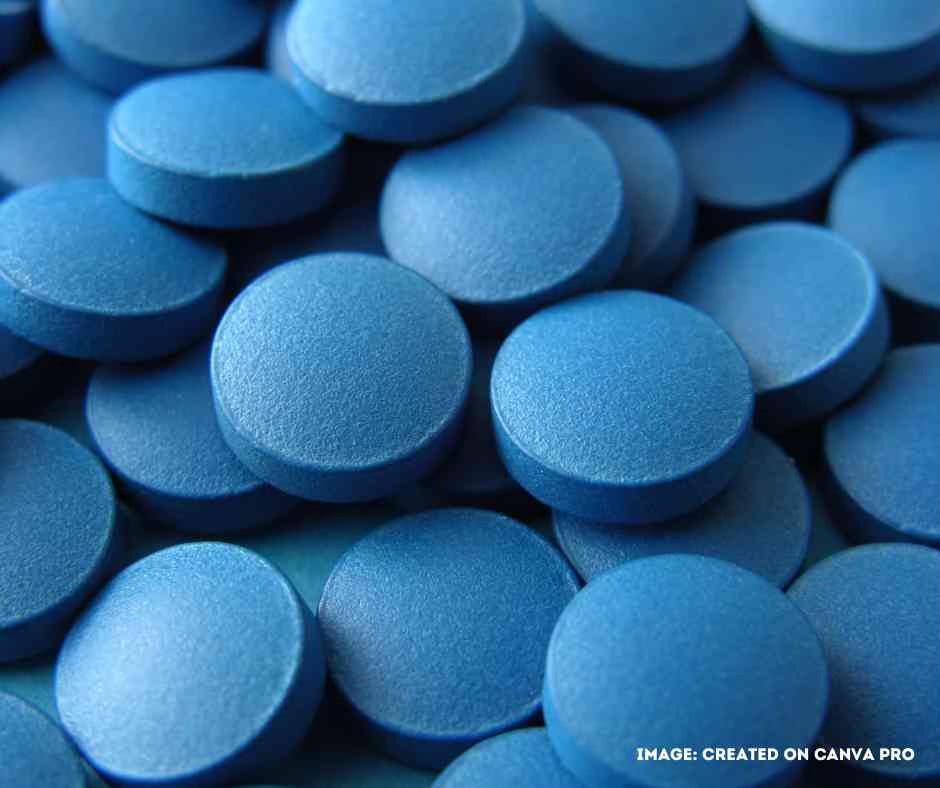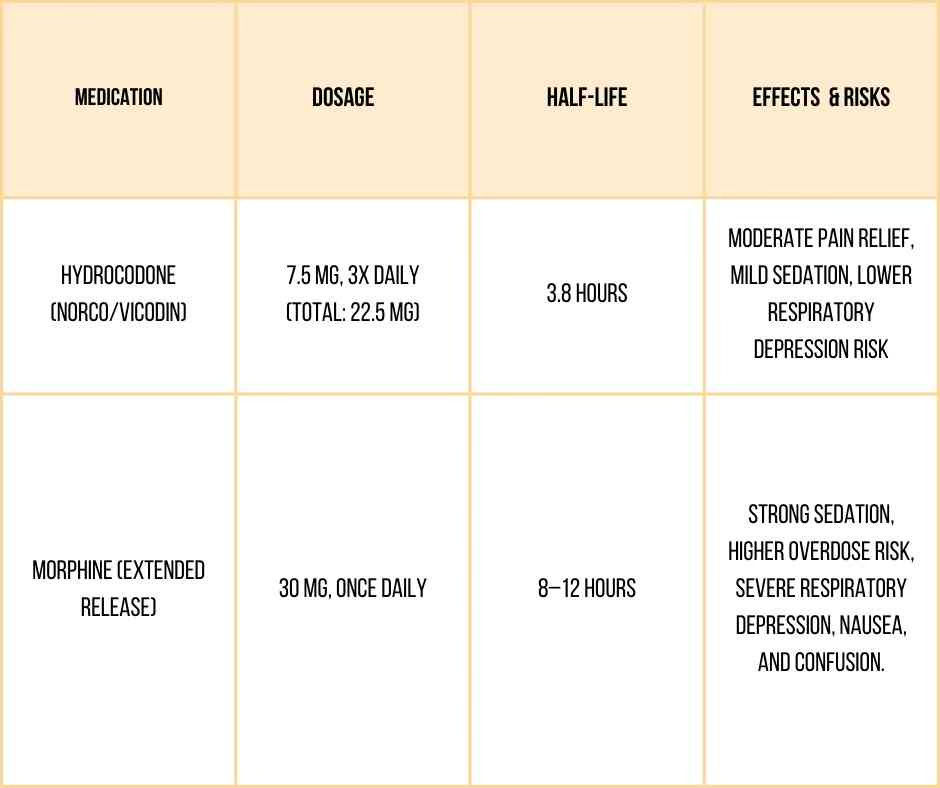Disclaimer: This article is NOT intended as medical advice. I’m sharing my experience in the hope that it helps you navigate your own health journey and continue aging artfully.

I went in for my quarterly medical checkup. The nurse took my vitals and asked about my pain levels.
“It’s a low 3-4, same as always,” I said with a cheerful smile.
“Does the pain affect your sleep?”
“Yes, I have to wake up to readjust myself, but I’m used to it,” I replied, still smiling.
The doctor entered with a curt hello. He skipped the usual pleasantries, offering no small talk or acknowledgment of how I was doing. Instead, he got straight to the point.
“I want to address your pain.”
“I wanted to talk with you about that…” I began, but he cut me off, firing the same questions the nurse had already asked just minutes earlier.
“I want to put you on morphine. Now, don’t get scared when you hear the word. It’s the cleanest pain reliever available. I’m taking you off your current medication, so you won’t need as much. Twice a day. Let’s start with that.”
My smile faded. My pulse quickened. “I’d rather not. This seems a bit drastic,” I said, my palms starting to sweat.
“Won’t I go through withdrawal?” I asked.
“No, you shouldn’t have any side effects, maybe a little nausea. Just try it for 10 days. Call me around day eight, and we’ll discuss renewing it for 30 days.”
He never gave me a chance to respond. Abruptly, he stood, walked to the door, and as he opened it, he turned back. “I want you to try a gluten-free diet for 30 days. No candy, soda, or white flour. Let’s see how you do then.”
“Is it possible I have an autoimmune disease? Shouldn’t I be tested?” I asked.
The door clicked shut. He never answered.
When dealing with chronic pain, we rely on doctors to make informed, responsible decisions about our treatment. We assume they weigh the risks, consider the safest options, and adjust medications cautiously. But what happens when that trust is misplaced—when a doctor recklessly increases your dosage, ignoring the risks?
I found out the hard way.
From Hydrocodone to Morphine, what a dangerous leap
For two herniated discs, crippling osteoarthritis, and spinal stenosis, I had been taking 7.5 mg of hydrocodone, three times a day for 2.5 years—a total of 22.5 mg daily, which my body had adjusted to over time.
Then, without a tapering plan or discussion of alternatives, my doctor jumped straight to 30 mg of morphine daily, an extended-release opioid far more potent than hydrocodone.
This wasn’t a simple switch—it was a dangerous escalation. Morphine is not equivalent to hydrocodone milligram for milligram, and this sudden increase drastically raised my risk of overdose, sedation, and respiratory depression.—SAMHSA
Had I taken it without question, I might not have woken up the next morning.
The dangerous effects of prescription change
The difference between hydrocodone and morphine isn’t just dosage—it’s how they interact with the body.
Comparing Potency & Effects
The dangers of this sudden increase
Respiratory Depression: Morphine suppresses breathing more aggressively than hydrocodone. At this dose, I could have stopped breathing in my sleep.
Severe Sedation & Confusion: Morphine’s strong sedative effects could have left me unresponsive, confused, or unconscious.
Nausea & Dizziness: Its impact on the digestive system often causes severe nausea, dizziness, and dehydration.
Hydrocodone Withdrawal: Stopping suddenly could trigger anxiety, chills, nausea, and severe pain rebound, making the transition miserable and dangerous.
Increased Overdose Risk: Morphine stays in the body longer, increasing the danger of accidental overdose—even from taking doses too close together.
What Happened to Me
I left the doctor’s office that morning after my appointment with no medication to get me through the day, unable to refill it prior because it was a controlled substance.
I suffered.
The next morning at 6:30 AM, I took the little blue Morphine pill from the bottle and stared at it, knowing this was a defining moment.
I wandered the kitchen, preparing breakfast, heart pounding.
I was alone. There was no one to call for help.
Except the doctor.
It was not considered a 911 emergency. That’s the key for matters of this nature. Reaching out for help isn’t as easy as picking up the phone. There are wait times these days associated with mental and physical health problems, due to lack of resources available to the public.
And sometimes waiting is the key in making a bad decision that may end in permanent physical disability, mental illness, or even death.
At 7:30 AM, I picked up the phone and left a voicemail. My discomfort and pain intensified. Withdrawal symptoms crept in—a pounding headache, throbbing elbows and neck, stiffening joints, spasms. And anxiety surged.
I had to do something.
I stared at the pill again. The urge seized me—to make the escalating discomfort stop, to escape the tightening grip of withdrawal. Logic lost. Survival won.
I took the little blue pill.
Forty-five minutes later, I was bedridden.
My vision blurred. My mouth dried out. My brain fogged over. I couldn’t read, write, or even watch TV.
But I felt no pain.
Nothing.
My joints, ligaments, and tendons floated. Three years of physical suffering—gone in an instant.
By 11:30 AM, I was spiraling. I called the doctor’s office, begging to speak with a nurse. I couldn’t drive, and the thought of getting in the car was impossible.
I couldn’t sleep either. My breathing was too shallow. The fear set in—if I drifted off, would I stop breathing and never wake up? What if I could never ride my bike, read a book, or kiss and hug my beloved husband ever again?

And then the worst thought of all: If I wanted to die, it would be so easy.
The emotional and mental crash lasted until 8 PM. I was shattered.
How did I stay out of withdrawal after taking that pill?
I scoured the medicine cabinet, desperate. In an emergency kit, and at 9:05 PM, I found four of my old pills left over from a trip last summer.
A miracle.
By 8 AM the next morning, I gathered the strength to drive to the doctor’s office. I brought copies of my emails, texts, and voicemail—proof of my distress from the day before.
The nurse stepped out from reception. "We just got your messages a few minutes ago," she said. "We can put you back on the old medication. The doctor suggests you take the morphine only at night."
Huh?
Did my calls, messages, and suffering mean nothing?
I handed back the morphine. "Dispose of it," I said.
The nurse murmured appreciation and told me my original medication was ready for pickup.
No apology. No acknowledgment. Just a quick fix for a disaster they created.
What my doctor should have done
A safe transition should have included:
Gradual Tapering: Slowly reducing hydrocodone while introducing morphine.
Lower Dose: Starting at 10-15 mg, not 30 mg.
Monitoring: Watching for withdrawal or respiratory issues.
Non-Opioid Options: Exploring alternatives before stronger narcotics.
Referred me out: Sent me to a pain management clinic or doctor
Instead, I was handed a prescription that could have shut my body down forever.
Always question your prescriptions
I’m not against medication, in fact I need it to function somewhat normally—but I am against reckless prescribing. Had I trusted my doctor without hesitation, I could have ended up in the ER—or the morgue.
Before taking any new prescription, especially opioids:
Ask for a tapering plan: never stop or switch suddenly.
Check dosage conversions: not all opioids are equal.
Know the risks: understand side effects and overdose potential.
Trust your gut: if something feels off, speak up.
Doctors make mistakes. I feel this was not a mistake. I feel it was medical negligence and mismanagement of prescribing dangerous medication.
Don’t feel stupid, ashamed, or allow ageism to prevail, and not to stand up for yourself. Push back, research, and get a second opinion.
Your life may depend on it.

Final Thought: This could have happened to anyone
The opioid crisis didn’t just affect addicts—it also happened to people who followed their prescriptions exactly as written. I was almost one of them.
Had I taken the medicine as prescribed and not questioned and listened to my own intuition, I might not have been writing to warn you. As it was, one pill was enough to warn me what I already knew was dangerous and potentially life-threatening.
This article is dedicated to my friend Mike, who talked to me throughout that day and helped me get through one of the nastiest experiences of my life. Your support meant more than I can say.
And, the next time you’re handed a prescription will you ask questions, research, and advocate for yourself?
Because trusting medical advice without question was a risk I couldn’t afford to take—and neither can you.





Please find a new doctor. 💖
This is how a large part of the opiod crisis began, doctors not listening to their patients and trusting in a drug because some pharmaceutical no medical degree said ¨its the best¨ oh and heres your kickback. It is one of the biggest problems in the US right now, and it started with people just wanting relief from pain and being mis managed.. its awful that you are going through this. I think it is important to talk about it and hold the medical professionals accountable for their horrible actions. I have seen it first hand.